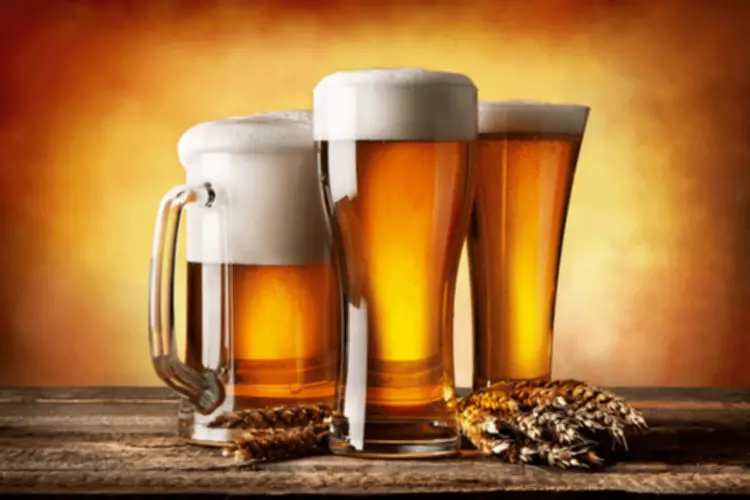
Type II alcoholics often exhibited a reverse personality profile, with low harm avoidance, high novelty seeking, and low reward dependence. This combination of traits also describes people with antisocial personality disorder (ASPD) (Cloninger 1987b) and is consistent with findings that type II alcoholics frequently suffer from ASPD (Gilligan et al. 1988). Chronic severe alcoholics include the highest percentage of people struggling with co-occurring psychiatric disorders and other substance abuse issues.

The Problem With Calling Someone an “Alcoholic”

Becoming cognitively impaired from excessive drinking of alcohol can lead to risky behaviors that can result in injury or death of an affected person or of others. Some people may drink alcohol to the point https://ecosoberhouse.com/ that it causes problems, but they’re not physically dependent on alcohol. Alcohol’s effects go beyond it’s effects on individual health and well-being; it also has steep economic and societal costs.
Is Binge Drinking Considered Alcoholism?
- In some cases, a DUI or alcohol-related conviction can reflect poorly on one’s character and lead to job loss for this reason.
- Making such a significant life change can cause emotional turmoil, including guilt for past behaviors or burdening others.
- Likewise, there is no single identified cause that leads to the development of alcoholism.
- Children who grow up in a home with a loved one dealing with alcohol addiction may be affected as well; they are at significant risk of developing alcohol use disorders themselves.
- This dependency can lead to various short- and long-term effects on the mind and body.
It’s estimated that 77% of the cost of excessive alcohol consumption in the U.S. is due to binge drinking, and most binge drinkers are not alcohol dependent. People with AUD and co-occurring psychiatric disorders bring unique clinical challenges tied to the severity of each disorder, the recency and severity of alcohol use, and the patient’s pressing psychosocial stressors. An overall emphasis on the AUD component may come first, or an emphasis on the co-occurring psychiatric disorder may take precedence, or both conditions can be treated simultaneously. The treatment priorities depend on factors such as each patient’s needs and the clinical resources available.
Alcohol Use Disorder Symptoms (and Signs in Other People)
The excess use of alcohol leads to billions in lost productivity and healthcare costs. It also has a heavy strain on families, communities, and society as a whole. Increased violence, injuries, accidents, child abuse, and intimate partner violence are all linked to alcohol use. Long-term alcohol use leads to changes in the brain that affect decision-making, emotional processing, and self-control, making people who drink more susceptible to aggression and violence. Department of Justice, alcohol makes intimate partner violence more frequent and severe.
Still, people dealing with AUD can achieve and maintain sobriety with appropriate treatment and support. Family members and friends can recognize the type of alcoholic by observing their loved one’s behaviors and their impact on relationships. Binge drinking equates to roughly five drinks for men and four for women within two hours. However, these numbers can vary depending on your alcohol tolerance and other biological responses. The good news is they’re more likely to seek treatment than those in other groups at 66%.

In the United States, a drink is defined as 12 ounces of regular beer or wine cooler, 8 ounces of malt liquor, 5 ounces of wine, or 1.5 ounces of liquor (such as vodka or rum). The real-world impact of alcohol abuse reaches far beyond the financial costs. When a loved one has a problem with alcohol, it can affect their marriage and their extended family. There’s also a larger impact on the community, schools, the workplace, the healthcare system, and society as a whole. 2In some of these studies, the researchers identified two alcoholic subtypes that corresponded to the type I and type II alcoholics in many characteristics but differed with respect to other characteristics.
Mutual Support Groups
- The two subtypes identified in this typology are called type I (milieu-limited) and type II (male-limited) alcoholism.
- Since the type I-type II alcoholism classification was developed, many researchers have confirmed the findings of the original studies and have further investigated differences between the two subtypes.
- Finally, epidemiologists need a definition of alcoholism that enables them to identify alcoholics within a population that may not be available for individual examination.
- Around 77% of that is attributed to binge drinking, defined as four or more alcoholic beverages per occasion for women or five or more drinks per occasion for men.
- Seek prompt medical care if you drink more than what is defined as moderate alcohol consumption.
They may start drinking to cope with stressful events like losing a job, going through a divorce, or dealing with a death in their family or a close friend. Talk to your healthcare provider if you’re under stress why do people become alcoholics and think you may be at risk for relapse. By having a better understanding of what type of alcoholic you may be, it can be easier to recognize that you would benefit from an alcohol addiction treatment program.
- This means they can be especially helpful to individuals at risk for relapse to drinking.
- The test is free, confidential, and no personal information is needed to receive the result.
- Treatment of AUD focuses on relieving symptoms of alcohol withdrawal in the short term and then suppressing alcohol cravings in the long term.
- Other ways to get help include talking with a mental health professional or seeking help from a support group such as Alcoholics Anonymous or a similar type of self-help group.
- Undergoing treatment for AUD can be challenging, and there’s always a risk of relapse.
- A study involving almost 1,000 people found that Black and Latino people and other ethnic groups were less likely than White people to get “quality” alcohol screenings.
The P300 amplitude also was reduced in people at risk for type II alcoholism, such as sons of type II alcoholics who were not alcohol dependent themselves (Begleiter et al. 1987). An alcoholic is someone who has developed an alcohol dependence and is experiencing physical and psychological cravings, tolerance, and withdrawal symptoms when trying to cut down or quit. Unhealthy alcohol use includes any alcohol use that puts your health or safety at risk or causes other alcohol-related problems. It also includes binge drinking — a pattern of drinking where a male has five or more drinks within two hours or a female has at least four drinks within two hours. Not all alcoholics know they suffer from a substance abuse problem because denial is a regular and expected aspect of alcoholism.
Functional Alcoholics
Many people with alcohol use disorder hesitate to get treatment because they don’t recognize that they have a problem. An intervention from loved ones can help some people recognize and accept that they need professional help. If you’re concerned about someone who drinks too much, ask a professional experienced in alcohol treatment for advice on how to approach that person. If your pattern of drinking results in repeated significant distress and problems functioning in your daily life, you likely have alcohol use disorder.
